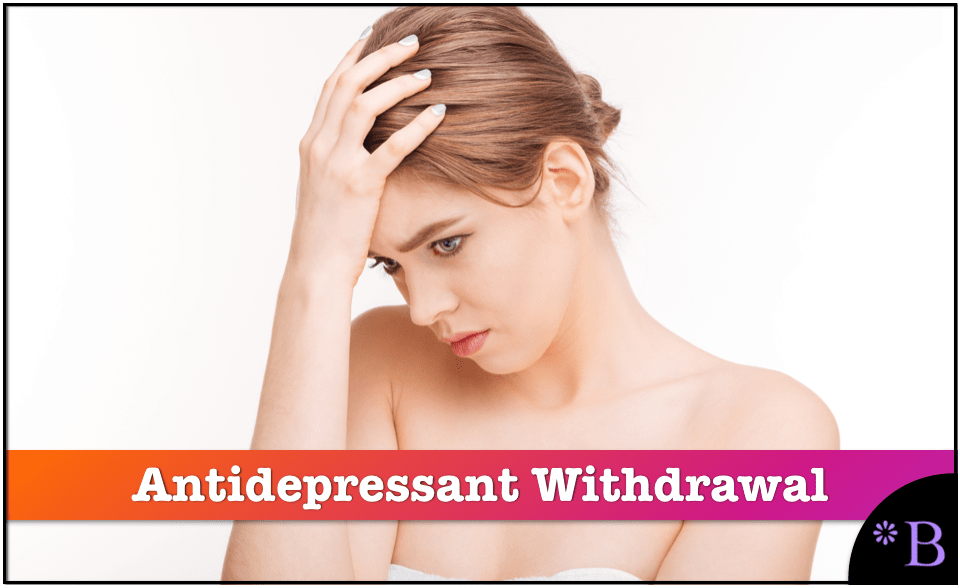What is the Reality of Fluoxetine Withdrawal Symptoms?
Executive Summary
- Fluoxetine is an addictive drug.
- Fluoxetine addiction and Fluoxetine withdrawal symptoms are deliberately minimized by pharmaceutical companies and the overall medical establishment.

Introduction
A primary method used by pharmaceutical companies, MDs, and the overall medical establishment is to minimize addiction. This article covers the gaslighting of patients, the public, and patients on Fluoxetine withdrawal symptoms.
What the medical Establishment Says About Fluoxetine Withdrawal Symptoms
Let us review the following quotation from the Recovery Village recovery center on Fluoxetine addiction.
For some, the symptoms of fluoxetine withdrawal will gradually improve without the need for additional treatment.
If there is no addiction to Fluoxetine (the official position of the medical establishment), why is there withdrawal?
Since serotonin has a calming effect, eating foods that are high in serotonin can help counter the effects of fluoxetine withdrawal. Some examples of foods that help you maintain optimum serotonin levels include spinach, lentils, and whole grains. Foods that help release serotonin include carbohydrates like oatmeal and foods with high in the amino acid L-tryptophan like turkey. Foods that are high in monounsaturated fat like avocados can help your brain receive the serotonin better.
Why weren’t depressed individuals placed on such a dies before being prescribed Fluoxetine which created the dependency? I ask because this is never done. Patients are not asked about their diet before being prescribed antidepressants.
Try foods that are known to help fight depression. Foods such as almonds and spinach that are rich in magnesium may help fight anxiety and stress.
Avoid caffeine and alcohol. It’s a good idea to try and avoid foods and drinks that can alter your mood. While caffeine and alcohol may help to lift your mood for a short while, in the long term they can have adverse side effects of their own.
Exercise. One of the many health benefits of exercise is that it can have a positive impact on mood levels. It can also help ease Fluoxetine withdrawal by helping to relieve stress and tension.
Again, why can’t all of this be done before being placed on Fluoxetine to see if it improves depressive symptoms before moving to Fluoxetine or any other antidepressant?
The following quote is from the Fluoxetine rehab page at Recovery Village.
Unlike other prescription medications that lead to substance use disorders, fluoxetine does not have any chemical ingredients that directly cause addiction, but the danger of this medication lies in the way it makes a patient feel.
Since it relieves symptoms of depression, anxiety, and other mental health disorders, the brain can become so dependent on the effect of this medication that when a patient stops taking it, the patient will go through withdrawals.
That means the patient is addicted to the item. Furthermore, Recovery Village is tap dancing around how Fluoxetine works. Fluoxetine is an SSRI, and it manipulates serotonin levels. Anytime you manipulate a neurotransmitter, you are creating an addictive scenario. Increasing serotonin, norepinephrine or dopamine creates major changes. The danger in most addictive drugs is “in the way it makes the patient feel.”
A patient who has become dependent on Fluoxetine can experience hyperactivity, insomnia, lack of emotion, and extreme aggression. If a patient finds that they are struggling with Fluoxetine misuse, there are plenty of treatment options available.
Again, Recover Villiage is substituting the medical establishment term “dependency” for addiction. And then states that such dependency can only come from misuse. Recovery Village states that Fluoxetine addiction only comes from those that abuse Fluoxetine or use it in a way not prescribed.
This is false. Fluoxetine, like other depressants, is addictive, even when used as prescribed. This is explained in detail in the article How Antidepressants Produce Addiction Through Altering the Neurotransmition Process. (Subscription required)